What’s Wrong With This Landscape? – And The Answer Is…
Yesterday, in my latest “Landscape No-No” post, I asked you if you could figure out what was wrong with this landscape that I drove by earlier this summer.
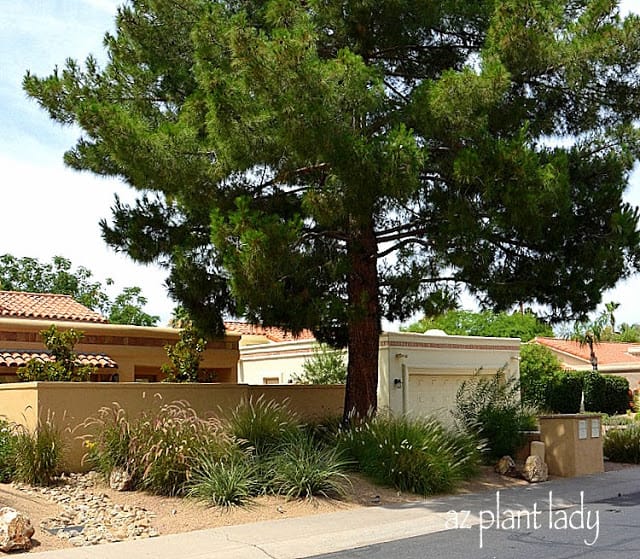
I had some great guesses.
Here are a few of my favorites…
“The grasses are planted too closely together.”
“There are too many similarly-shaped plants.”
AND
“The large Pine tree is too large for this landscape and planted too closely to the wall where its can fall or its roots can cause damage.”
Well, they are all great answers and are correct. BUT, there is something else wrong with this landscape, which no one noticed.
Look closely at the two photos below…
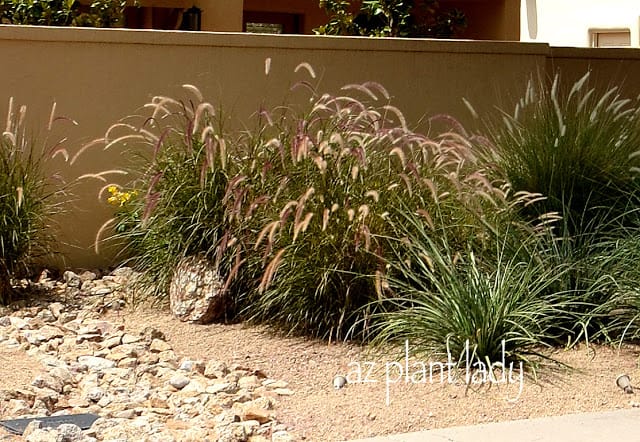
Above, is Purple Fountain Grass (Pennisetum setaceum ‘Rubrum’).
It is a beautiful ornamental grass and is fine for this landscape.
BUT, notice the ornamental grass to the right with the cream-colored plumes.
Here is a closer view…
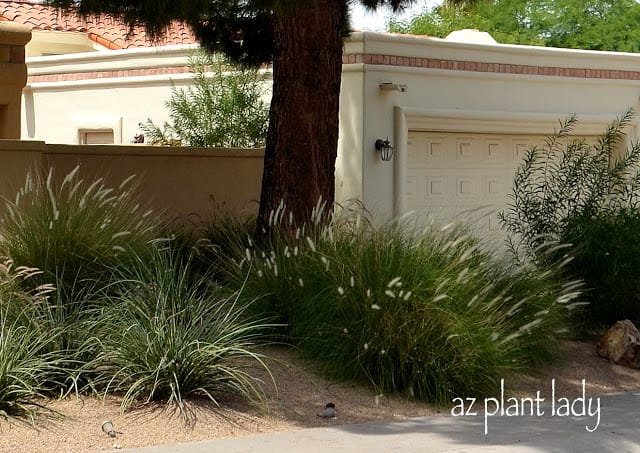
This grass is also called Fountain Grass, just without the ‘Purple’.
The problem with regular Fountain Grass (Pennisetum setaceum), is that while attractive – it is considered an invasive plant in many areas including the southern half of the United States and Hawaii.
Native to Africa and the Middle East, it spreads easily and is overtaking areas of the desert, outcompeting the native plants and grasses.
The reason that it’s a problem here is that it was widely planted in the mid 20th century. Unfortunately, that was before people knew it would become a problem.
In this landscape, the homeowners were probably thinking that they were planting the same type of grass as the Purple Fountain Grass (which is not invasive).
SO WHAT CAN BE DONE?
Well, removal is necessary and requires someone with a strong back to take it out.
A great alternative to Fountain Grass that looks even better is called ‘Gulf Muhly’ or ‘Regal Mist’ (Muhlenbergia capillaris ‘Regal Mist’).
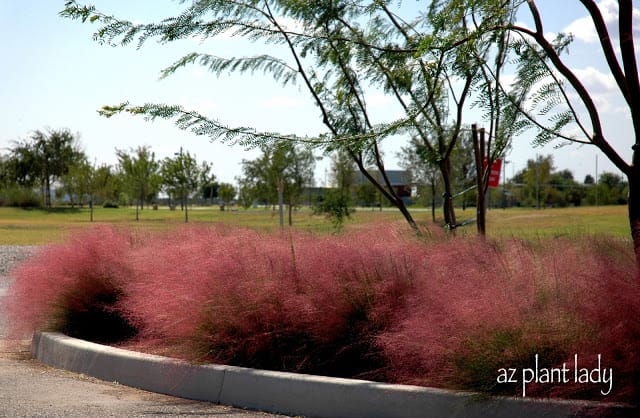
It starts out green in spring and summer…
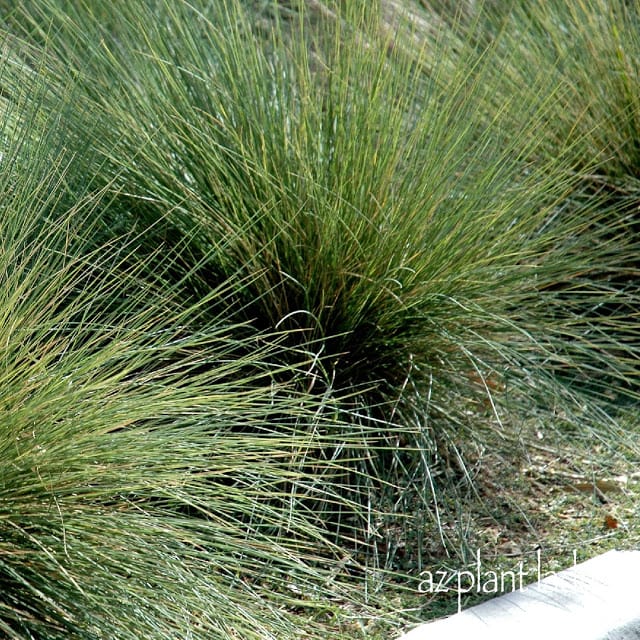
As fall approaches, burgundy-colored plumes begin to appear…


Once winter arrives, the plumes fade to an attractive wheat-color…
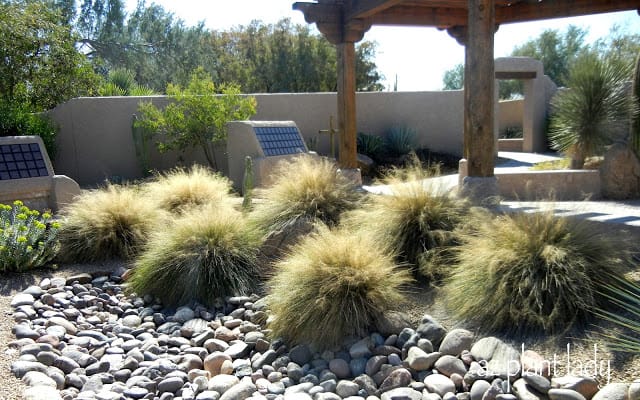
Maintenance is very easy – simply prune back to 6 inches in late winter/early spring.
**For more information on Fountain Grass, including on where it is found and how to manage it, click here.
I promise to show additional “Landscape No-No’s” and how to deal with them in the future.

 Noelle Johnson, aka, 'AZ Plant Lady' is a author, horticulturist, and landscape consultant who helps people learn how to create, grow, and maintain beautiful desert gardens that thrive in a hot, dry climate. She does this through her consulting services, her online class Desert Gardening 101, and her monthly membership club, Through the Garden Gate. As she likes to tell desert-dwellers, "Gardening in the desert isn't hard, but it is different."
Noelle Johnson, aka, 'AZ Plant Lady' is a author, horticulturist, and landscape consultant who helps people learn how to create, grow, and maintain beautiful desert gardens that thrive in a hot, dry climate. She does this through her consulting services, her online class Desert Gardening 101, and her monthly membership club, Through the Garden Gate. As she likes to tell desert-dwellers, "Gardening in the desert isn't hard, but it is different."
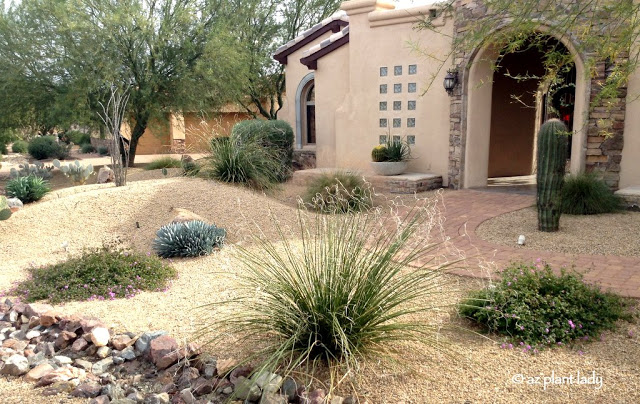
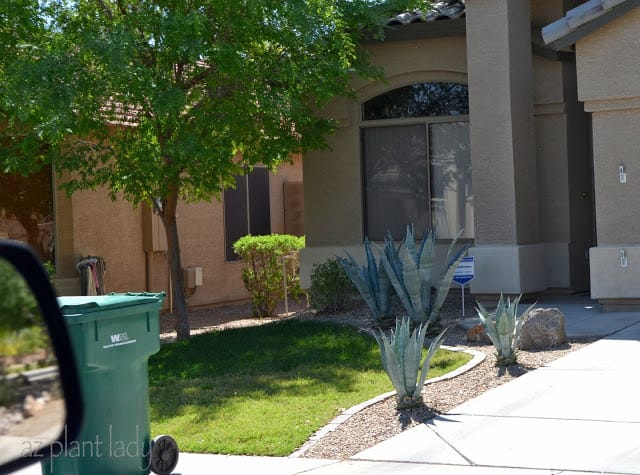
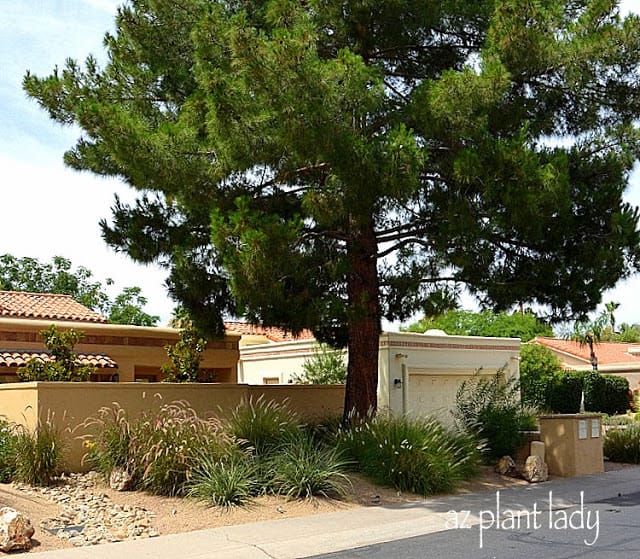
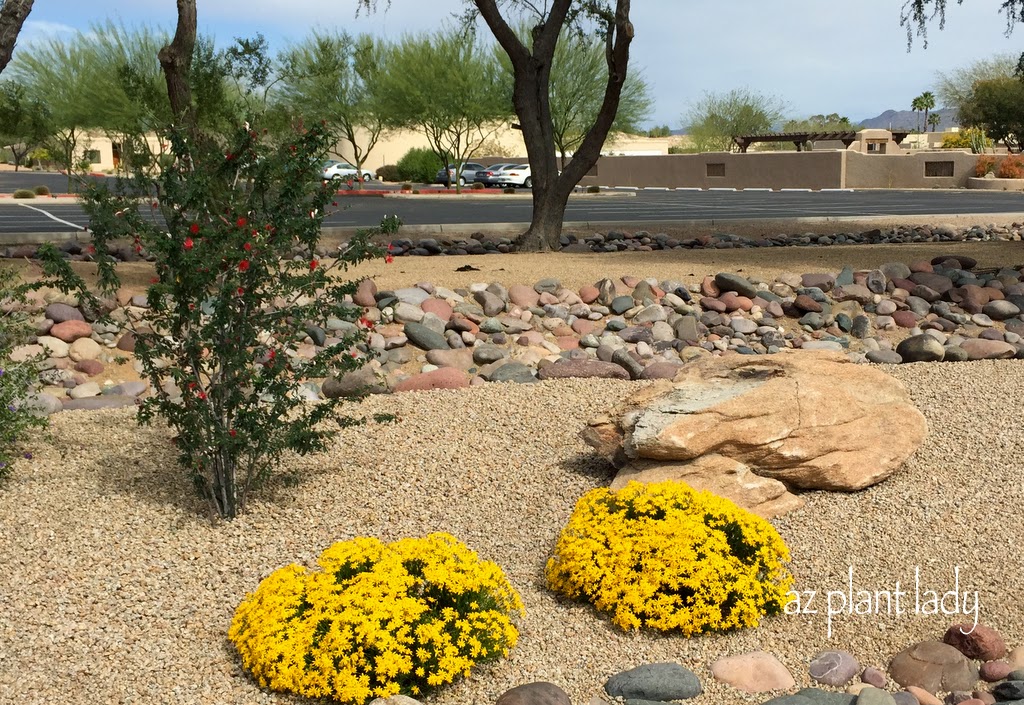
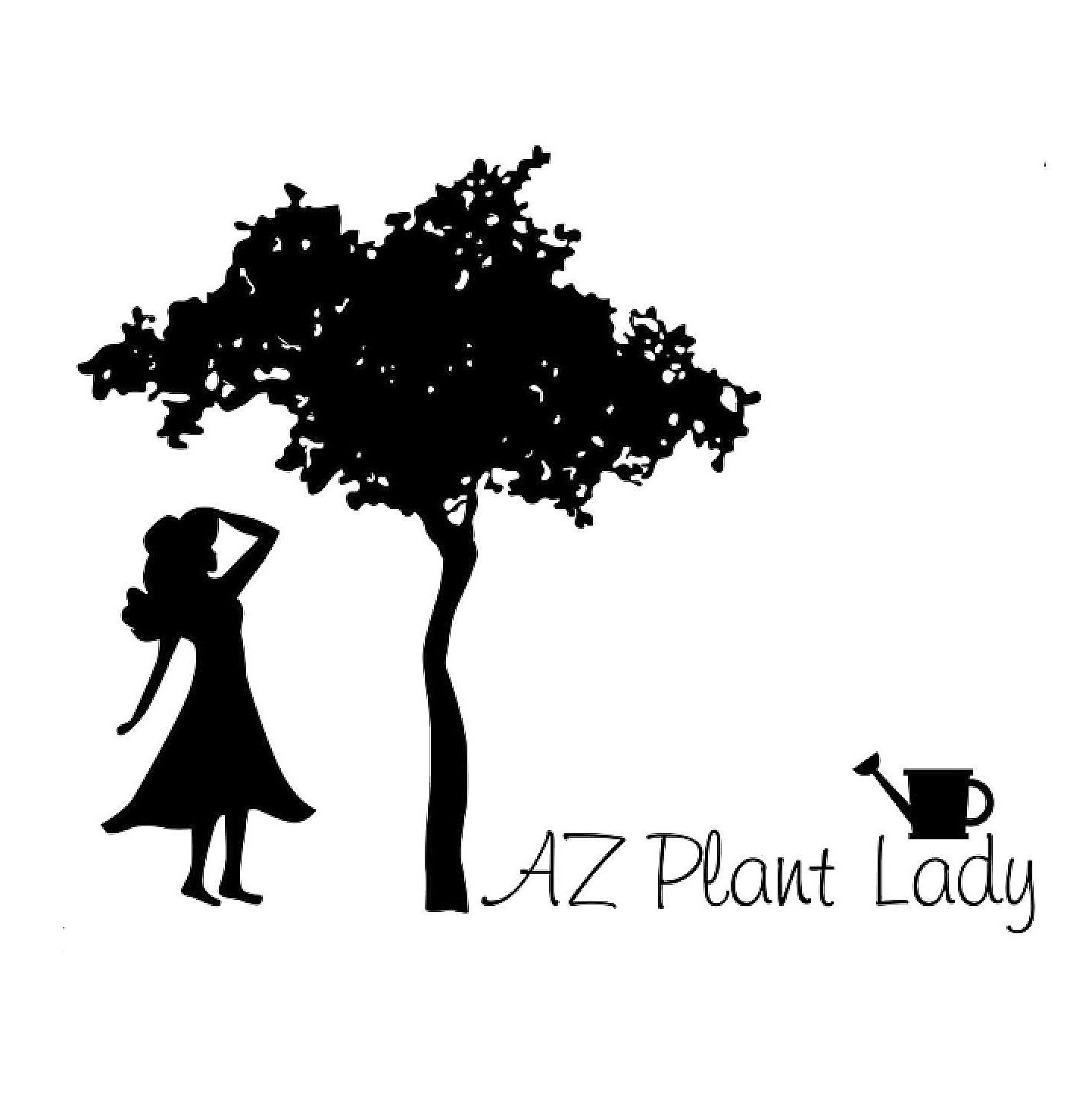









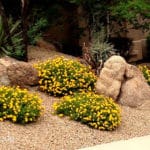
Ah ha! Good to know! I will remember this tip – thanks Noelle. 🙂
Those burgundy plumes are beautiful!
Noelle, Every time I visit your blog – I want to move. I so like your area of the country! It is so different than here on the shores of Lake Michigan. It is interesting that both where you area and here, invasive species were planted with no understanding of what they will do the the environment in the years ahead. Good to point that out. Jack